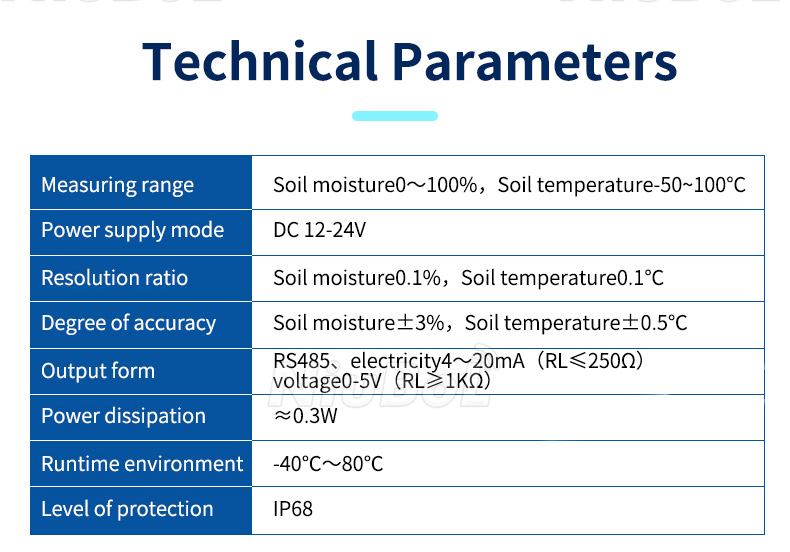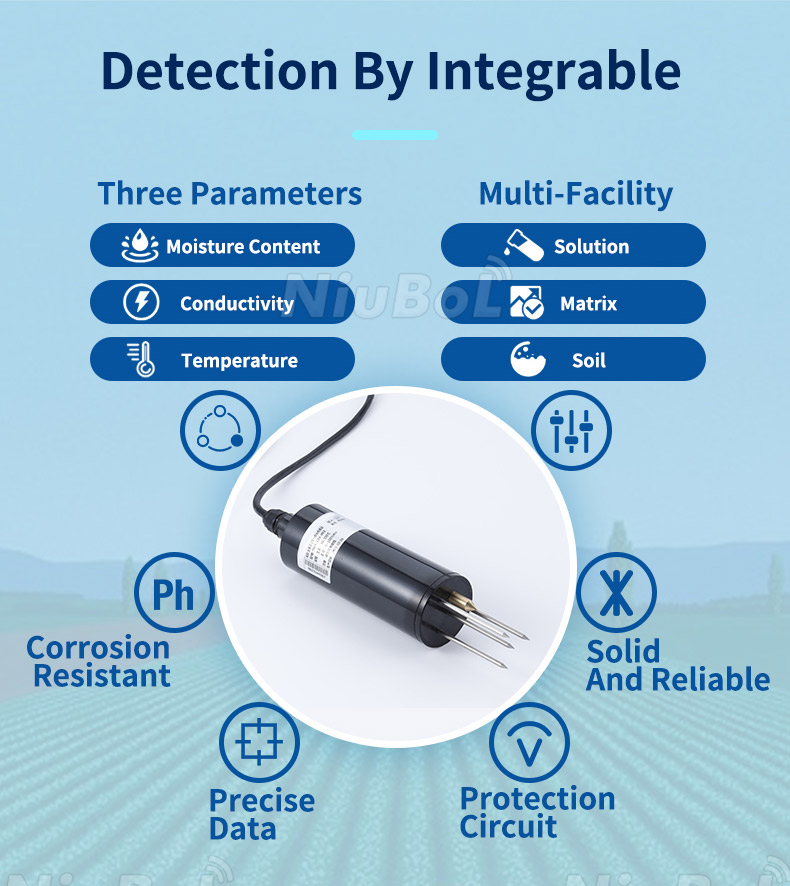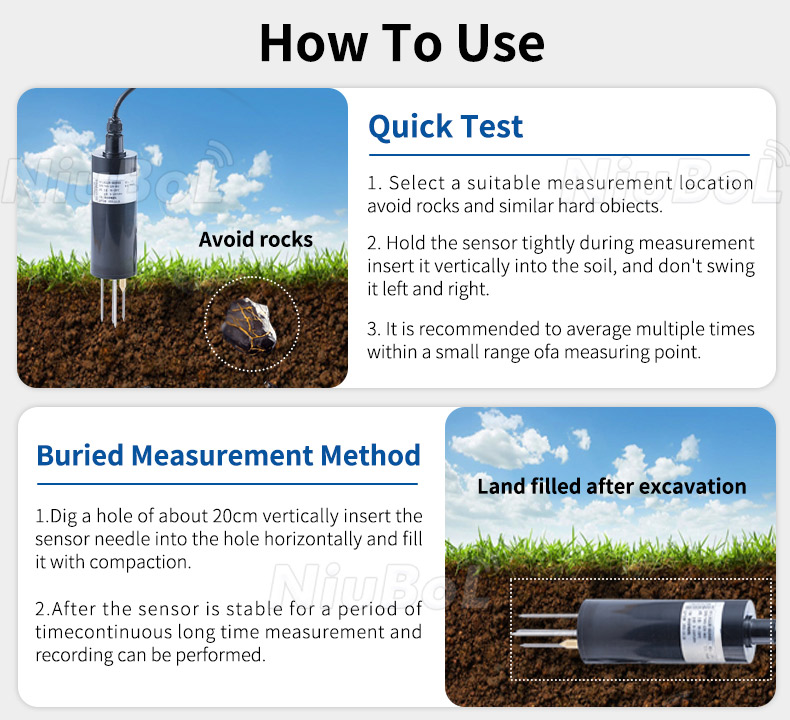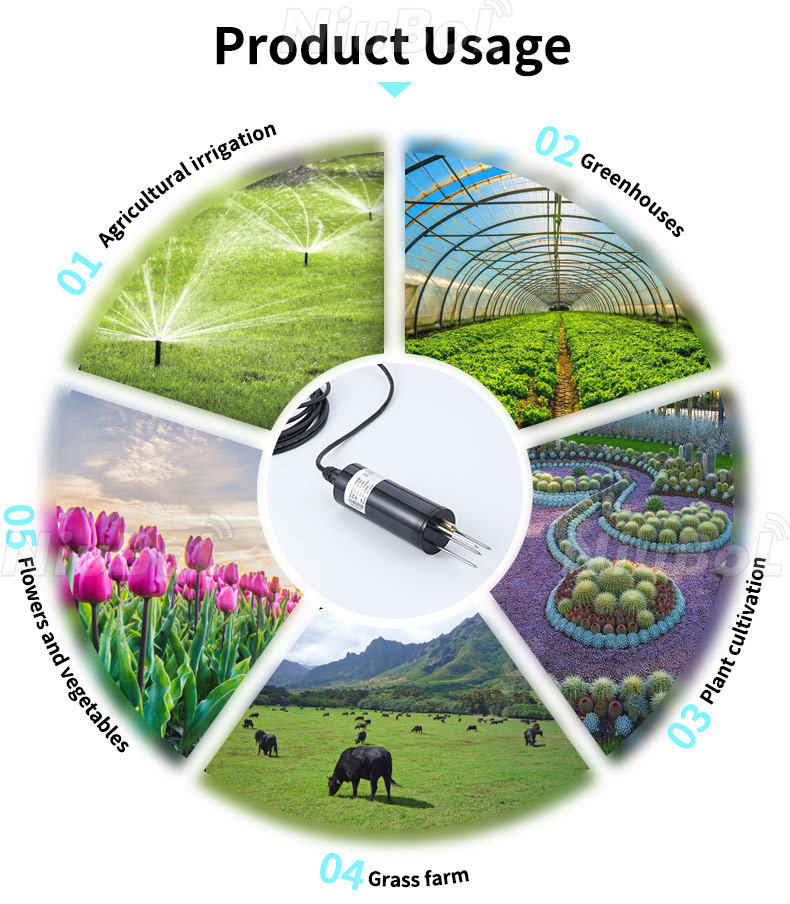

— Blogs —
—Products—
 Consumer hotline +8618073152920
Consumer hotline +8618073152920 WhatsApp:+8615367865107
Address:Room 102, District D, Houhu Industrial Park, Yuelu District, Changsha City, Hunan Province, China
Product knowledge
Time:2024-11-10 16:01:56 Popularity:3078
“Unit of soil moisture sensor” refers to the unit of measurement used by a soil moisture sensor to measure soil moisture. Different soil moisture sensors may use different units of measurement, depending on the type of sensor and the application.
Soil moisture sensors are used to detect the moisture content in the soil, and their measurements can be expressed in a variety of units, depending on the type of sensor, the measurement principle and the application scenario. The following units are commonly used by soil moisture sensors to measure soil moisture and their meanings:
- This is the most intuitive and common unit that expresses the volume of water in the soil as a percentage of the total soil volume. For example, 30% means that 30% of the volume of the soil consists of moisture.
2. volumetric moisture content (m³/m³ or cm³/cm³):
- This unit indicates the volume of water contained in the soil per cubic meter or cubic centimeter. For example, 0.2 m³/m³ or 0.2 cm³/cm³ means that there are 0.2 cubic meters or 0.2 cubic centimeters of water per cubic meter or cubic centimeter of soil.
3. water content by weight (g/g or kg/kg):
- Indicates the weight of water per unit weight of soil. For example, 0.2 g/g means that there are 0.2 grams of water per gram of soil.

- Water potential is a physical quantity used to describe the energy state of water in the soil in kilopascals (kPa). It reflects the availability of soil water, with smaller values indicating that water is more readily available for plant uptake.
- Soil moisture sensors sometimes indirectly reflect moisture content by measuring changes in electrical resistance. An increase in soil moisture results in a decrease in resistance, so the resistance value can be used to estimate soil moisture.
- Sensors such as frequency domain reflectance (FDR) types measure the dielectric constant of the soil, which is a dimensionless value that is closely related to soil moisture content. A higher dielectric constant usually indicates more water in the soil.

- The TDR technique utilizes the velocity of electromagnetic wave propagation through the soil to measure soil moisture. Although this is not a direct unit, the moisture content of the soil can be calculated by analyzing the propagation time of the electromagnetic wave.
- Specifically refers to the amount of water per volume of soil, usually expressed as a percentage, e.g., 20% VWC. This unit directly reflects the volumetric percentage of water in the soil, and is one of the most commonly used units of soil moisture measurement in agriculture and scientific research.

- Electrical conductivity is the ability of the soil to conduct electrical currents in microsiemens per centimeter (μS/cm), and it is related not only to soil moisture but also to soil salt concentration.
This unit of measurement is very useful in the fields of agricultural irrigation and environmental monitoring because it directly reflects the degree of wetness of the soil, which helps farmers and researchers to develop rational irrigation schedules and fertilizer application programs based on soil moisture conditions, as well as to make other related soil management decisions.
The unit of measurement for soil moisture sensors is usually volumetric water content, which is expressed as a percentage by volume (%V/V) or (m3). This means that the sensor measures the volume of water in the soil as a percentage of the total volume. For example, a soil moisture sensor with a measurement of 30% (m3) indicates that out of every cubic meter of soil, 0.3 cubic meters is water.
Overall, the unit of measurement for soil moisture sensors is volumetric water content, usually expressed as a percentage by volume (%V/V) or (m3).

Choosing the right unit of measurement depends on specific application requirements and personal preference. In areas such as agricultural irrigation and environmental monitoring, volumetric water content (VWC) is the preferred unit because it directly reflects the amount of water available to plants. However, in some specific research or engineering applications, other units such as water potential (kPa) or resistance value (Ω/kΩ) may be more applicable.
1.NBL-S-THR Soil Temperature Moisture Sensor datasheet
NBL-S-THR-Soil-temperature-and-moisture-sensors-Instruction-Manual-V4.0.pdf
2. NBL-S-TMC Soil Temperature Moisture EC Sensor datasheet
NBL-S-TMC-Soil-temperature-and-moisture-conductivity-sensor.pdf
3. NBL-S-TM Soil Temperature Moisture Sensor datasheet
NBL-S-TM-Soil-temperature-and-moisture-sensor-Instruction-Manual-4.0.pdf
4. NBL-S-TMCS Soil Temperature, Moisture, Conductivity and Salinity Integrated Sensor
NBL-S-TMCS-Soil-Temperature-Humidity-Conductivity-and-Salinity-Sensor.pdf
Related recommendations
Sensors & Weather Stations Catalog
Agriculture Sensors and Weather Stations Catalog-NiuBoL.pdf
Weather Stations Catalog-NiuBoL.pdf
Related products
 Combined air temperature and relative humidity sensor
Combined air temperature and relative humidity sensor Soil Moisture Temperature sensor for irrigation
Soil Moisture Temperature sensor for irrigation Soil pH sensor RS485 soil Testing instrument soil ph meter for agriculture
Soil pH sensor RS485 soil Testing instrument soil ph meter for agriculture Wind Speed sensor Output Modbus/RS485/Analog/0-5V/4-20mA
Wind Speed sensor Output Modbus/RS485/Analog/0-5V/4-20mA Tipping bucket rain gauge for weather monitoring auto rainfall sensor RS485/Outdoor/stainless steel
Tipping bucket rain gauge for weather monitoring auto rainfall sensor RS485/Outdoor/stainless steel Pyranometer Solar Radiation Sensor 4-20mA/RS485
Pyranometer Solar Radiation Sensor 4-20mA/RS485
Screenshot, WhatsApp to identify the QR code
WhatsApp number:+8615367865107
(Click on WhatsApp to copy and add friends)
